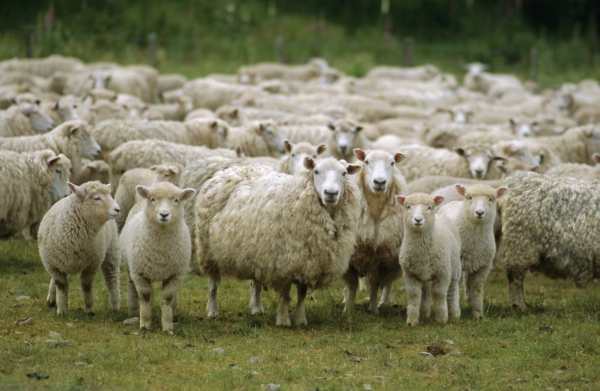Raising sheep in the Philippines can be as profitable as raising goats in local farms. Sheep contributes to food production, rural employment and gross national product by converting roughages into meat, wool and skin. Although Filipinos do not generally eat meat lambs, there is a growing demand for mutton and scope for export of meat.

Nilo Casas, who is an avid goat raiser, is very much convinced that there is money in raising sheep. Casas said, he was able to earn more than a million pesos for selling 275 heads of sheep alone.
Since sheep are part of the goat antelope subfamily, Casas discloses that there isn’t much difference in raising sheep and goats. In fact, he says, it is even easier to raise sheep because they don’t succumb to the dreaded sore eyes and foot and mouth diseases which usually infect a lot of goat breeds. Both ruminants, sheep and goats could also be raised together in the same farm and share the same food, which mostly consist of weeds and silage.
Casas shared a piece of advice for those who are interested in raising sheep: “For a start, you can raise five to 10 heads of sheep. After eight months, the ewes can already be impregnated by the rams. In five months, they would already give birth. If the sheep reaches the optimum weight of 18 kilograms, they can already be sold. In my experience, you would spend around Php500 per head of sheep. That would already include their food, depreciation and labor costs. Sheep can eat any kind of grass although I would recommend napier, para grass, centrosema, malunggay and ipil-ipil. If you want good quality meat, you could also feed them with growing mash-the one that you feed the pigs.”
Raising Sheep: Lamb Fattening
This technology is best suited to small or medium sized farms. Small-scale farmers carry out lamb fattening to increase their family income, while medium-scale farmers do it to gain more benefit from their ranch.
Advantages of Lamb (a young domestic sheep) Fattening
Lamb is a meat animal. Fattening lambs has the following advantages.
– Lambs can adapt to a range of environments;
– There is a relatively small investment;
– The lambs ofter a form of savings in case of emergency needs;
– Manure production;
– Protein supply.
This leaflet will inform the farmers about lamb selection, the rearing house, feed, diseases and their control, and harvesting time.
1. Lamb Selection
In lamb fattening, it is lamb selection which determines the success of the fattening. The selection of the lamb should be based on the following criteria:
– Male lambs aged 10-12 months;
– Weight of the lamb about 20 kgs.;
– Good health, lean, good posture, and without handicaps.
– Local lamb, can be fat- or thin-tailed breed.
2. Feed
It is important to consider which feeds are to be given during fattening, because these are 70% of the production cost. The feed should consist of water and dry materials. Dry materials consist of organic and inorganic materials, including fodder and concentrates. Fodder can include green leaves, cut grass, legumes, etc., while concentrates can be made from tubers (cassava, sweet potato, or potato), grains (corn, sorghum, soybean, peanut, etc.) and animal protein (fish flour, blood flour, skim milk, and meat flour, etc.)
The daily feed consumption of a lamb should be 3.1% of its body weight. Concentrates can be given to a level of about 2.5% of body weight daily. Clean drinking water should be available at all times.
3. Rearing House
The rearing house is to protect the lamb and stop it from wandering. It also enables farmers to inspect the lambs and control any diseases. The rearing house should be:
– Separate from the farm house, and in a quiet place;
– Large enough to meet the space needs of the lambs;
– Free of damp and puddles, it should receive enough sunshine but not be too hot;
– It should be protected from wind blowing directly inside, particularly at night;
– It should be clean, to keep the incidence of disease to a minimum.
The rearing house should be constructed as follows:
– It should be divided into several rooms. The size of each room should be large enough to allow 0.4 x 1.2 m for each lamb.
– Fodder concentrates and water should be made available outside the room.
– The floor of the rearing house should have slats at intervals of 2-3 cm, so that the dung falls directly to the ground.
4. Diseases and Their Control
To protect the lambs from diseases, the following program should be followed.
– Quarantine new lambs for 1-2 days, to ensure that no new lamb is infected with disease.
– Provide the new lambs with worm control medicine.
– Isolate any diseased lambs from healthy ones, and give them appropriate medication.
– Keep the rearing house clean.
Common diseases of lambs which need to be kept in mind include diarrhea, scabies, bloat, pink-eye and worms.
Cooperating agency for this topic:
Assessment Institute of Agricultural Technology (AIAT), Ungaran, Indonesia.
Sources: agnet.org, agribusinessweek.com


Filipinos can absolutely eat lamb any time. its just that there is none available
ilan po ang sheeps ngayon sa pinas? Agri Entrep student po ako na hirap magsearch at Goat parati ang nalabas. Salamat po
Can we get your number Mr Casas. Im interested with this
I want to be in contact with supplier of sheep
anong uri po ng sheep ang ginamit niyo Mr. Nilo Casas
Where is Noel Casas' farm located? 🙂 Thank you!
can you advice where to buy best sheep for raising, my farm was in Quezon province, I am interested to start raising in my farm soonest.